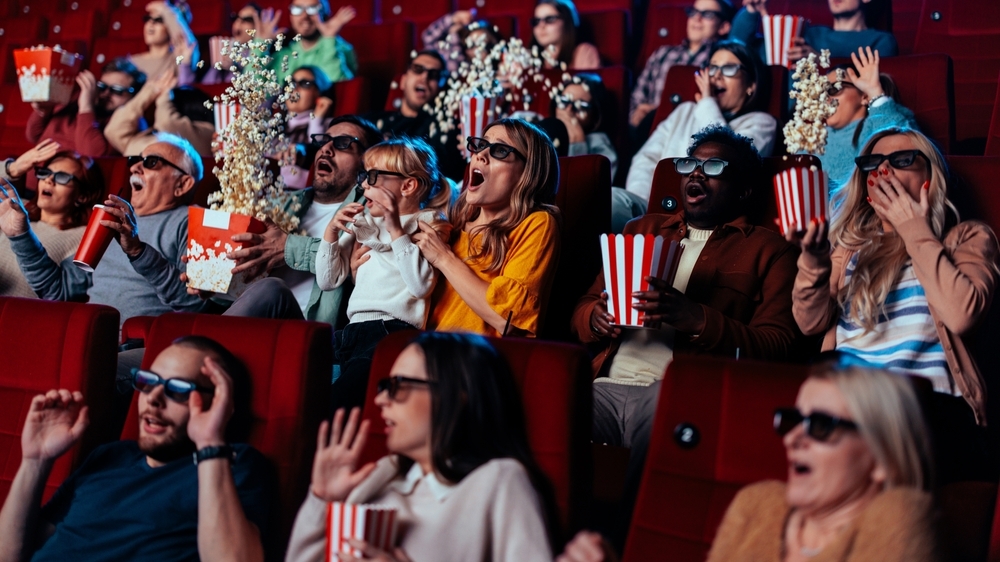Technologies and Key Attractions of Flying Theaters
Technologies and Key Attractions of Flying Theaters

Introduction to Flying Theaters
Definition and Overview of Flying Theaters
A flying theater simulator ride uses novel motion technologies and gigantic, immersive displays to simulate flight. With curved or dome screens, synchronized motion seats, higher than HD (1280x720 pixels to 1920x1080 pixels) projection systems, and LED screens, such attractions recreate flying across speckled landscapes. Many include wind, mist, and smell. The complexity and scale of flying theaters vary. Some may even handle around 100 seats.
Evolution from Traditional Simulators to Flying Theaters
Originally, simulation rides paved the way for flying theaters. It started a global craze that caused over 50 panoramic flying theaters between 2013 and 2021. Early versions had static displays and slight motion. As motion control and projection technologies upgraded, experiences became more multifaceted. For example, Brogent Technologies' i-Ride Flying Theater utilizes 6DOF platform motion technology for lifelike, immersive rides. VR and 3D full-dome presentations have blurred the lines between the real world and the digital world.
Importance in Modern Entertainment and Theme Parks
New entertainment and theme parks count on flying theaters to interest and placate visitors. For instance, LEGOLAND Windsor's "Flight of the Sky Lion" earned the 2021 European Star Award. Also, according to the TEA/AECOM 2021 report on global attractions and attendance, theme parks increased worldwide visitation by 72% compared to 2020. Flying theaters may also include instructional content, so they're multipurpose entertainment and learning tools.
Technologies Powering Flying Theaters
Hardware Components
Seats with creative mechanisms that enable six degrees of freedom are the heart of any flying theater or simulator ride. Flying feels better with these mechanisms, which replicate pitch, roll, and yaw. The stools are precision-engineered to match motion with visual material, using electric cylinder systems that react instantaneously to film changes.
Structural design is also key. Seats are hung or placed on motion system platforms with dome projections. All audience members have ideal viewing angles. The structures must bear considerable operational stresses but be flexible enough for comfort and safety. Secure harnesses and restraints that meet US, EU, GB, and other amusement ride safety regulations, including ASTM F2291, EN 13814-1:2019, and HSG175, are vital. Many theaters include wheelchair-accessible seats that replicate motion effects. Experts say these hardware components boost flying attraction realism and immersion.
Software Components
A flying theater's thrilling experience is powered by complex software that syncs real-time motion with high-definition footage shot from helicopters, capturing breathtaking landscapes and cityscapes. The software, potentially developed on platforms like Unity or Unreal Engine, integrates motion systems with projected graphics to create a convincing illusion of flight. Manufacturers may employ proprietary algorithms to synchronize seat motions with on-screen activities, enhancing the realism of the simulator ride. Additionally, the program controls sensory effects such as wind, mist, and scents, which intensify the immersion at precise moments, making scenes like soaring over rugged mountains or gliding above bustling city streets profoundly engaging.
Another feature is customization, which lets operators adjust themes and experiences. Modular software lets a central system load and control diverse situations for flexibility. The program also uses mighty projectors and screens to change brightness, contrast, and resolution for the best visual quality in any light. Remember, millisecond-level motion-visual synchrony helps suspend disbelief and reduce motion sickness. Flying attractions will use real-time ray tracing and artificial intelligence to expand immersive entertainment frontiers.
Key Attractions of Flying Theaters

Immersive Experience
Flying theaters use inventive virtual reality technology to deliver an immersive experience unequaled in depth and realism. Essentially, these simulator rides use VR (without glasses) to engulf spectators in three-dimensional surroundings. Apart from that, the visuals also match environmental facts, including wind, fragrance, and mist. These effects let viewers feel like they're flying over exotic places like the Great Wall of China or the Great Barrier Reef.
Interactive Experience
Seat movement DoF increases flying theaters' interactive experience. More specifically, futuristic flying attractions may have several degrees of freedom for seats to pitch, roll, and yaw to the visual story. This fluid motion improves flying and enables more complicated and intriguing stories. Narratives with interactive features further promote audience participation. For example, some theaters let spectators make real-time plot changes. Interactivity turns viewers into active participants for better engagement and customization.
Thematic Content
Flying theaters employ 8K projection and LED screens to target a range of audiences with their themed material. For instance, Brogent’s "Discover America" aerial filming program is intended to appeal to cultural and natural interests. The scenes are more genuine because the 8K resolution depicts even the slightest elements. This high-definition material works well in educational contexts where historical or scientific accuracy is important.
Group Enjoyment
Flying theaters encourage social connections and shared experiences while accommodating several people. This configuration lets friends and family enjoy the simulator ride together. The grouped arrangement also optimizes sightlines and acoustics, apart from seating capacity, to give everyone an immersive experience. Synchronized motions and responses strengthen shared experiences and connections. Besides that, flying attractions may provide pre- and post-show social spaces to enhance the group experience. This social aspect renders the attraction a shared journey, so it becomes more memorable and fun for everyone.
Explore Brogent's Range of Flying Theater Solutions
The Brogent i-Ride, m-Ride, v-Ride360, and o-Ride flying theaters provide a stimulating and interactive experience. For realism, our systems use the latest motion platforms, 8K projection, and synchronized wind, mist, and fragrance effects. Furthermore, our modular design renders it simple to fit different venue sizes. Brogent provides venues with revolutionary technology, content, and trustworthy operational support for a high-quality, engaging attraction. For more details, contact Brogent Technologies.